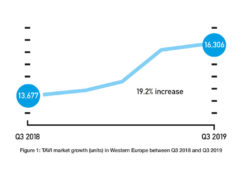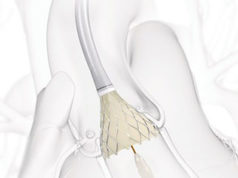
David Cohen (Saint Luke’s Mid America Heart Institute, Kansas City, USA) has suggested that, on basis of both clinical and economic considerations, transcatheter aortic valve implantation (TAVI) should be the first-line approach for patients with aortic stenosis at intermediate risk. He noted that data from the PARTNER 2A and Sapien 3 trials indicate that TAVI in intermediate-risk patients results in cost savings and greater quality adjusted life expectancy.
Speaking at the 2017 Transcatheter Cardiovascular Therapeutics (TCT) meeting (29 October–2 November, Denver, USA), Cohen commented that TAVI has now been approved—on the basis of the PARTNER 2A and SURTAVI trials—for use in intermediate-risk patients. However, he noted that although the intervention has been found to be cost-effective for inoperable patients and for high-risk patients, “whether TAVI is cost-effective compared with surgical aortic valve replacement for intermediate-risk patients is currently unknown”. Therefore, he and his colleagues used data from the PARTNER 2A and Sapien 3 intermediate-risk trials to determine if the intervention was cost-effective in this group of patients.
Index hospitalisation costs, Cohen reported, were calculated using a combination of resource-based accounting and Medicare claims. “All other costs—follow-up hospitalisations, doctor services, outpatient testing, custodial care—were based directly on Medicare payments derived from claims,” he said.
Reviewing data from PARTNER 2A, which was a randomised controlled trial that compared TAVI using the Sapien XT device with surgical aortic valve replacement in patients at intermediate-risk, procedural costs were US$22,0983 higher with Sapien XT because of the cost of the device. However, after the reduced length of stay and in-hospital complications that are associated with TAVI were accounted for, index hospitalisation costs were only US$2,888 higher with Sapien XT (p=0.014 for the comparison). Furthermore, the total two-years costs were significantly lower with Sapien XT—US$107,716 vs. US$114,132; a decrease of US$6,416 (p=0.01).
According to Cohen, after the PARTNER 2A results were projected over a lifetime horizon, Sapien XT resulted in both cost savings of US$7,949 and greater quality adjusted life expectancy (QALY) of 0.15 years.
With the Sapien 3 observational trial, which compared outcomes of patients who underwent TAVI using the Sapien 3 device (Edwards Lifesciences) with those of the surgical cohort of PARTNER 2A, TAVI with Sapien 3 resulted in lower index hospitalisation costs: US$54,256 vs. US$58, 410 (p=0.014). This finding occurred because, despite the higher cost of the Sapien 3 device, TAVI with Sapien 3 resulted in even greater reductions in procedural duration and length of stay compared with surgery than TAVI with Sapien XT did compared with surgery.
At one year, total costs were lower with Sapien 3: US$80,977 vs. US$96,489 (p<0.001)—a reduction of US$15,511 (p<0.001). In the a lifetime horizon projection for Sapien 3, the device was associated with lifetime cost savings of US9,692 and increase in QALY 0.27 years.
Cohen concluded that, on the basis of these cost-savings data, TAVI with either the Sapien XT or Sapien 3 valve is an “economically dominant strategy” compared with surgery that provides “both greater life quality-adjusted life expectancy and lower long-term costs with a high degree of confidence”. He added: “These findings suggest that TAVI should be the preferred strategy for such patients, based on both clinical and economic considerations.”
Cohen told Cardiovascular News: “Further study will be necessary to understand the cost-effectiveness of TAVI technology in younger and lower risk populations, for whom valve durability will be an additional important consideration.”












